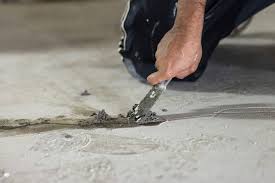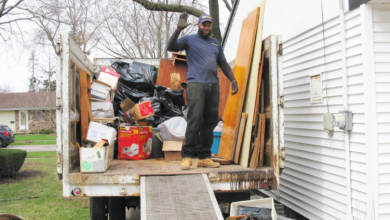Understanding Slab Leak Repair: Causes, Signs, and Solutions

A slab leak is one of the most serious and potentially costly issues a homeowner can face. These leaks occur beneath the concrete slab foundation of a home, making them difficult to detect and repair. Left untreated, a slab leak can cause extensive damage to a home’s foundation, flooring, and structural integrity, leading to significant repair costs and potential safety hazards.
This comprehensive guide will explore the causes of slab leaks, the signs that indicate a possible slab leak, the process of diagnosing the problem, and the various methods used to repair slab leaks. By understanding these aspects, homeowners can take proactive steps to prevent slab leak repair and address them promptly if they occur.
What Is a Slab Leak?
A slab leak occurs when water pipes located beneath a home’s concrete slab foundation develop leaks. These pipes are typically part of the home’s plumbing system, carrying water to and from the house. When these pipes fail, water can seep into the foundation and surrounding areas, leading to significant damage over time.
Slab leaks can occur in both hot and cold water lines, and they can vary in severity from small, slow leaks to large ruptures that release significant amounts of water. Because the leak is hidden beneath the slab, it can go undetected for a long period, exacerbating the damage.
Causes of Slab Leaks
Several factors can contribute to the development of slab leaks. Understanding these causes can help homeowners take preventative measures to protect their plumbing and foundation.
1. Poor Installation
Improper installation of water pipes during the construction of a home is a common cause of slab leaks. If the pipes are not correctly installed, they may be subject to stress and movement over time, leading to cracks or breaks that result in leaks. This is especially true for pipes that are laid too close to the slab, where they may be affected by the weight and shifting of the concrete.
2. Corrosion
Over time, water pipes can corrode due to the interaction of water with the metal in the pipes. This is particularly common in older homes where pipes may be made of materials more susceptible to corrosion, such as galvanized steel or copper. Corrosion weakens the pipes, making them more prone to developing leaks.
3. Abrasion
Abrasion occurs when water pipes rub against the concrete slab or other hard surfaces. As water flows through the pipes, they can shift slightly, causing them to wear against the slab. Over time, this constant friction can wear down the pipes, leading to leaks.
4. Soil Movement
Soil movement beneath a home’s foundation is a significant cause of slab leaks. Factors such as soil expansion and contraction due to moisture changes, seismic activity, or settling can place stress on the pipes beneath the slab. This stress can cause the pipes to crack or break, resulting in a leak.
5. High Water Pressure
Excessively high water pressure can place stress on the pipes in a home’s plumbing system, leading to leaks. When the pressure exceeds the pipes’ capacity, it can cause them to burst or develop small cracks that gradually worsen.
6. Chemical Reactions
Certain chemical reactions between the water and the materials in the pipes can lead to slab leaks. For example, if the water supply contains a high concentration of minerals, it can lead to the buildup of scale inside the pipes, which can eventually cause them to fail.
Signs of a Slab Leak
Because slab leaks occur beneath the foundation, they can be difficult to detect until significant damage has occurred. However, there are several signs that homeowners can watch for that may indicate the presence of a slab leak.
1. Unexplained Increase in Water Bills
One of the first signs of a slab leak is a sudden and unexplained increase in water bills. If you notice that your water bill has risen significantly without an increase in water usage, it could be due to a hidden leak in the plumbing system.
2. Water Pooling on Floors
Water pooling on floors, especially in areas where there should be no water, is a clear indication of a potential slab leak. This is often seen as small puddles or damp spots on the floor that persist even after cleaning.
3. Warm Spots on the Floor
If you notice warm spots on your floor, particularly in areas where there are no heat sources, it may be a sign of a hot water line leak beneath the slab. This is a common indicator of a slab leak, as the warm water from the leaking pipe heats the concrete and the flooring above it.
4. Cracks in Walls or Floors
Cracks in walls, flooring, or the foundation itself can be a sign of a slab leak. As water seeps into the foundation, it can cause the slab to shift or settle unevenly, leading to cracks in the structure.
5. Mold or Mildew
The presence of mold or mildew, particularly in areas that are not typically prone to moisture, can indicate a slab leak. The moisture from the leak can create an environment conducive to mold growth, which can pose health risks in addition to structural damage.
6. Sound of Running Water
If you hear the sound of running water when all faucets and water-using appliances are turned off, it could be a sign of a hidden leak, potentially beneath the slab. This is a significant indicator that should not be ignored.
7. Low Water Pressure
A sudden drop in water pressure throughout the home can be a sign of a slab leak. The leak can reduce the amount of water flowing through the pipes, leading to lower pressure at faucets and other water outlets.
Diagnosing a Slab Leak
Diagnosing a slab leak typically requires the expertise of a professional plumber, as the leak is often hidden beneath the foundation. However, there are several methods used to locate and diagnose the exact location of the leak.
1. Pressure Testing
Pressure testing is a common method used to detect leaks in a plumbing system. The plumber will close off the water supply to the house and then pressurize the system with air. If the pressure drops, it indicates that there is a leak somewhere in the system, potentially beneath the slab.
2. Electronic Leak Detection
Electronic leak detection involves using specialized equipment to listen for the sound of water escaping from the pipes beneath the slab. This method is highly accurate and can pinpoint the exact location of the leak without the need for invasive measures.
3. Thermal Imaging
Thermal imaging cameras can detect temperature differences in the flooring and foundation, which can indicate the presence of a slab leak. This is particularly useful for detecting hot water line leaks, as the escaping warm water will create a distinct thermal pattern.
4. Moisture Meters
Moisture meters can detect elevated levels of moisture in the flooring or walls, which can indicate a slab leak. This method is often used in conjunction with other diagnostic tools to confirm the presence of a leak.
5. Camera Inspection
In some cases, a plumber may use a small camera inserted into the plumbing system to visually inspect the pipes for damage or leaks. This method can provide a clear view of the condition of the pipes and help pinpoint the location of the leak.
Slab Leak Repair Methods
Once a slab leak has been diagnosed, it’s crucial to address the problem promptly to prevent further damage. There are several methods used to repair slab leaks, ranging from minor repairs to more extensive procedures, depending on the severity and location of the leak.
1. Pipe Rerouting
Pipe rerouting is often used when the damaged pipe is difficult to access or if the leak is located in an area with multiple leaks or extensive corrosion. In this method, the leaking section of the pipe is abandoned, and a new pipe is installed above ground or through the walls. This approach avoids the need to break through the slab and can be a more cost-effective solution.
2. Spot Repair
Spot repair involves breaking through the concrete slab to access and repair the leaking section of the pipe directly. This method is typically used when the leak is localized and easily accessible. The damaged section of the pipe is replaced, and the slab is then repaired and restored. While this method is effective, it can be disruptive and may require extensive repair work to the flooring and foundation.
3. Epoxy Pipe Coating
Epoxy pipe coating is a less invasive method used to repair slab leaks without breaking through the concrete. In this process, an epoxy resin is applied to the inside of the damaged pipe, sealing the leak from within. This method is effective for small leaks and can extend the life of the existing plumbing system.
4. Pipe Bursting
Pipe bursting is a trenchless repair method used when the entire pipe needs to be replaced. In this method, a new pipe is pulled through the old, damaged pipe, effectively bursting the old pipe and replacing it with a new one. This method minimizes the need for excavation and can be a faster and less disruptive solution.
5. Slab Repair
In cases where the slab itself has been compromised by the leak, additional repairs to the foundation may be necessary. This can involve reinforcing the slab, repairing cracks, or stabilizing the foundation to prevent further damage.
Preventing Slab Leaks
While it’s not always possible to prevent slab leaks, there are several steps homeowners can take to reduce the risk and protect their plumbing system.
1. Regular Plumbing Inspections
Regular plumbing inspections by a licensed plumber can help identify potential issues before they become serious problems. A plumber can check for signs of corrosion, wear, and other factors that could lead to a slab leak.
2. Monitor Water Pressure
Monitoring and maintaining proper water pressure in your home can help prevent stress on the plumbing system. Installing a pressure regulator can help keep water pressure within safe limits, reducing the risk of leaks.
3. Address Soil Movement
If you live in an area prone to soil movement, consider taking measures to stabilize the soil around your foundation. This can include proper drainage, foundation watering systems, and other methods to minimize the impact of soil movement on your foundation.
4. Use Quality Materials
When building or renovating a home, ensure that high-quality materials are used for the plumbing system. Modern materials, such as PEX or CPVC, are more resistant to corrosion and wear than older materials like galvanized steel or copper.
5. Stay Informed
Stay informed about the condition of your home’s plumbing system and take action at the first sign of trouble. Early detection and repair of minor issues can prevent them from developing into major problems, saving you time and money in the long run.
Conclusion
Slab leaks are a serious and potentially costly issue that can cause significant damage to a home’s foundation and structure. Understanding the causes, signs, and repair methods for slab leaks can help homeowners take proactive steps to protect their homes and address any issues promptly.
By staying vigilant and addressing potential problems early, you can minimize the impact of a slab leak and maintain the integrity and safety of your home for years to come. If you suspect a slab leak in your home, it’s essential to contact a professional plumber as soon as possible to diagnose and repair the issue before it leads to more extensive damage.









